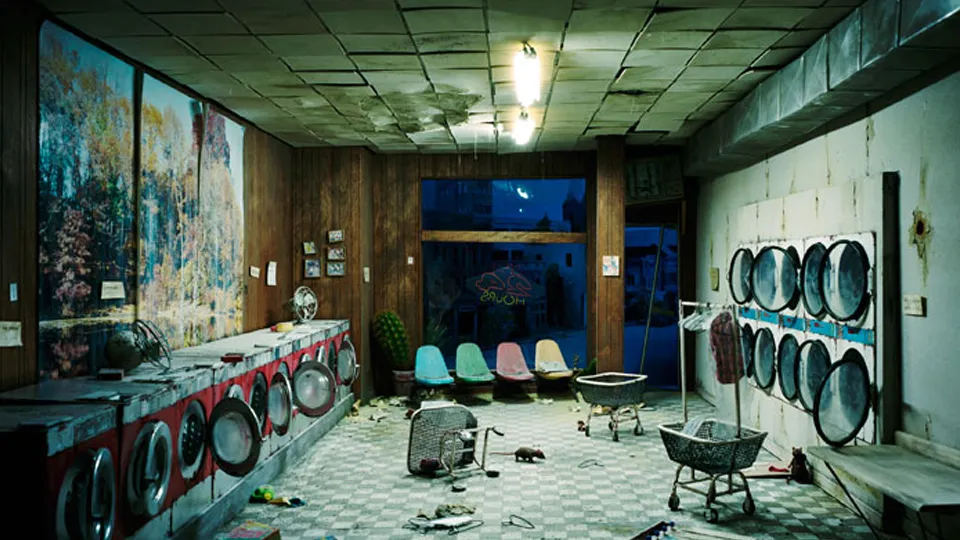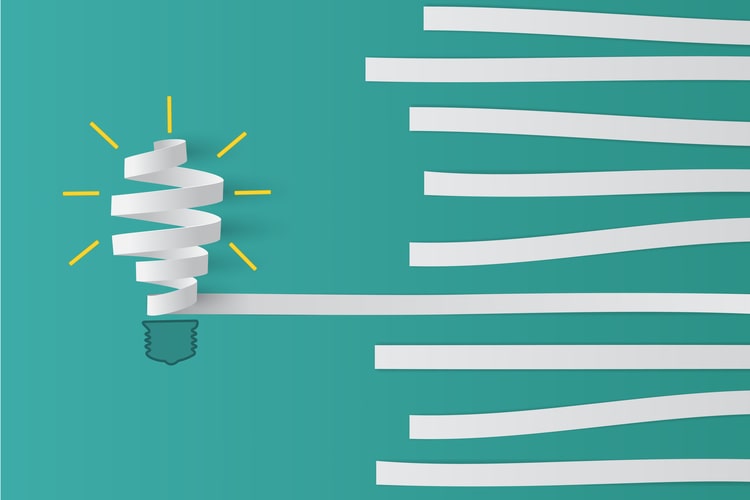In societies bound by control, visual symbols emerge as silent acts of defiance, carrying messages that words alone cannot safely convey to the oppressed.
🎨 The Secret Language Written in Plain Sight
Throughout human history, oppressive regimes have attempted to silence dissent through censorship, surveillance, and punishment. Yet creativity finds its path through the cracks of authoritarianism. Visual codes of rebellion—from graffiti tags to fashion choices, from color symbolism to artistic movements—have consistently served as vehicles for resistance when verbal expression becomes dangerous.
These visual languages operate on multiple levels simultaneously. To the untrained or unsympathetic eye, they may appear as mere aesthetic choices or cultural expressions. But to those who understand the context and symbolism, each element carries weighted significance, transforming public spaces into battlegrounds of meaning and identity.
The power of visual rebellion lies in its accessibility and deniability. Unlike written manifestos or spoken declarations that can be directly prosecuted, visual codes exist in a liminal space where interpretation becomes subjective, providing both message and protection to those brave enough to display them.
Historical Blueprints: When Colors Became Weapons
The French Revolution introduced us to the revolutionary tricolor, transforming simple fabric combinations into statements of political allegiance. During World War II, the simple V-sign became an internationally recognized symbol of resistance against Nazi occupation, spreading across occupied Europe with remarkable speed.
In Cold War Eastern Europe, jazz culture wasn’t merely about music—the entire aesthetic, from clothing styles to album art, represented a visual vocabulary of Western freedom and individualism. Young people who wore certain styles of jeans or listened to prohibited records were making deliberate visual statements about their rejection of state-imposed cultural conformity.
The AIDS crisis of the 1980s birthed the pink triangle—originally a Nazi symbol of persecution—reclaimed and inverted as a badge of defiant pride. ACT UP’s “Silence=Death” campaign demonstrated how visual design could mobilize communities and challenge governmental neglect through stark, memorable imagery that penetrated public consciousness.
The Power of Reclaimed Symbols ✊
Oppressive systems often mark their targets with identifying symbols meant to shame and segregate. The genius of visual rebellion frequently lies in reclaiming these very symbols, stripping them of their oppressive intent and recharging them with defiant pride. This act of symbolic judo transforms weapons of oppression into shields of solidarity.
When marginalized communities take ownership of symbols meant to diminish them, they perform a powerful act of cultural alchemy. The yellow star, the pink triangle, derogatory slurs transformed into badges of identity—each represents a refusal to accept the oppressor’s narrative and an insistence on self-definition.
Street Art as Democracy’s Canvas
Urban environments under authoritarian control present unique challenges for expression. Official channels are monitored, censored, or entirely closed to dissenting voices. This is where street art emerges as perhaps the most accessible and immediate form of visual rebellion available to ordinary citizens.
Graffiti operates as guerrilla communication—quick, anonymous, and reproducible. A single symbol spraypainted overnight can spark conversations, inspire imitators, and force authorities into visible reactions that often amplify the original message. The act of creation itself becomes as significant as the content, demonstrating that public space isn’t solely owned by those in power.
In contemporary contexts, from the Arab Spring murals to Hong Kong’s Lennon Walls, street art has documented resistance movements in real-time. These visual records serve multiple purposes: they maintain morale among resisters, communicate with international audiences, and create historical documentation that outlives individual protests.
The Stencil Revolution 🎭
Banksy’s rise to global prominence demonstrated how anonymous street artists could leverage visual codes to critique power structures while maintaining the safety that anonymity provides. The stencil technique—allowing rapid deployment and consistent reproduction—became a favored tool for activists worldwide.
Stencils permit complex imagery to be applied in seconds, crucial when authorities actively suppress unauthorized expression. This technique democratizes art creation, allowing non-professionals to participate in visual dialogue and transforming resistance from individual acts into collective movements.
Fashion as Armor and Advertisement
What we wear communicates before we speak. In restrictive societies, fashion becomes a carefully coded language where hemlines, colors, accessories, and styles can signal allegiance, identity, or defiance. Punk culture’s emergence in 1970s Britain exemplified how aesthetic choices could embody anti-establishment philosophy.
The deliberate destruction and reconstruction of clothing—rips, safety pins, unconventional combinations—visually represented rejection of consumer culture and social conformity. This wasn’t random chaos but carefully constructed visual rhetoric that communicated complex political positions through immediate visual impact.
In Iran, women’s hijab styles have become sites of ongoing negotiation and resistance. The way a headscarf is worn—loosely, pushed back, in certain colors—communicates attitudes toward mandatory dress codes. These subtle variations might seem insignificant to outsiders but carry substantial meaning within the cultural context, sometimes resulting in confrontations with morality police.
The Rainbow as Rebellion 🌈
Color itself can become rebellious when regimes attempt to control its usage. The rainbow flag’s evolution from simple symbol to global icon of LGBTQ+ rights demonstrates how color combinations can unify disparate communities across geographical and cultural boundaries. In countries where homosexuality remains criminalized, displaying rainbow colors—even subtly—constitutes an act of courage.
Authoritarian governments have responded to this symbolism with remarkable sensitivity, sometimes banning rainbow imagery entirely, inadvertently confirming the symbol’s power to threaten established hierarchies. These overreactions often amplify the very messages authorities seek to suppress, as the Streisand effect transforms local acts of defiance into international news.
Digital Resistance: Memes as Modern Protest Art
The internet age has revolutionized visual rebellion, creating new opportunities and challenges. Memes function as the street art of digital spaces—easily created, rapidly distributed, and difficult to completely suppress. Their humor often provides plausible deniability while conveying serious political commentary.
In China, citizens have developed sophisticated visual languages to evade censorship algorithms. Winnie the Pooh imagery became a subtle way to reference political leadership, while blank white images served as powerful statements during COVID-19 lockdown protests. These adaptations demonstrate how visual codes evolve to circumvent increasingly sophisticated surveillance technologies.
Social media platforms have become contested territories where visual symbols circulate at unprecedented speeds. Hashtags paired with specific images create movements that transcend language barriers. The raised fist, the umbrella symbol from Hong Kong, the green wave of feminist movements—each demonstrates how digital spaces amplify visual codes beyond their original contexts.
Cryptic Communication in Surveillance States 📱
As governments deploy artificial intelligence and facial recognition technologies, visual rebellion adapts. Anti-surveillance fashion incorporates patterns that confuse recognition algorithms. Protesters wear masks not only for anonymity but as uniform symbols of collective identity, making individual identification more difficult while strengthening visual unity.
The cat-and-mouse game between censors and creators drives innovation in visual communication. When authorities ban certain symbols, new ones emerge—often more creative and harder to suppress than their predecessors. This evolutionary process ensures that visual rebellion remains dynamic and relevant to changing circumstances.
Architecture of Defiance: Buildings That Speak
Physical structures themselves can become visual statements of resistance. Informal settlements that spring up despite government opposition represent architectural rebellion—communities that refuse to be erased assert their existence through construction. Each structure declares: “We are here, and we will not be moved.”
In apartheid South Africa, township shacks were painted in vibrant colors despite the grey uniformity authorities preferred. These color choices transformed spaces of oppression into expressions of cultural vitality and human dignity that no policy could fully extinguish.
Contemporary examples include the painted staircases of Valparaíso, Chile, or the colorful favelas of Rio de Janeiro, where residents have transformed marginalized spaces into tourist attractions through collective artistic effort. These projects reclaim narratives about poor communities, asserting beauty and creativity where outsiders might see only poverty.
Body as Billboard: Tattoos and Embodied Messages
Permanent body modification represents perhaps the most committed form of visual rebellion. Tattoos that reference prohibited ideologies, commemorate suppressed histories, or celebrate stigmatized identities transform human skin into protected archives of resistance.
In societies where certain symbols are banned in public display, tattooing them onto bodies creates a dilemma for authorities. The body becomes both gallery and sanctuary, carrying messages that cannot be easily erased without violating bodily autonomy—a line even authoritarian regimes sometimes hesitate to cross publicly.
Maori ta moko, Yakuza irezumi, Russian criminal tattoos—each represents a visual language encoding identity, history, and status information comprehensible to insiders while remaining mysterious to outsiders and authorities. These traditions demonstrate how marginalized communities develop and maintain sophisticated visual communication systems across generations.
Scars as Storytelling 💪
Beyond decorative tattooing, scars from resistance—whether from protests, imprisonment, or survival—become involuntary visual testimonies. Many activists choose to display rather than hide these marks, transforming wounds into badges of credibility and commitment. The body becomes living documentation of struggle, more powerful than any written account.
The Economics of Symbolic Resistance
Visual codes of rebellion aren’t free from commercial considerations. The same symbols that represent authentic resistance can be commodified, mass-produced, and stripped of their original meaning. Che Guevara’s image on t-shirts represents the ultimate irony—a communist revolutionary’s face generating capitalist profits.
This commercialization presents ethical dilemmas. Does widespread adoption of resistance symbols dilute their power or amplify their message? When corporations embrace rainbow flags or raised fists, are they supporting movements or performing “woke-washing” to appeal to socially conscious consumers?
Yet commercial adoption also has benefits. It normalizes previously radical symbols, making them less dangerous for everyday citizens to display. The mainstreaming of punk aesthetics or hip-hop fashion has allowed their underlying messages about inequality and systemic injustice to reach audiences who might never engage with explicit political content.
Teaching Eyes to See: Literacy in Visual Rebellion
Understanding visual codes requires cultural literacy and contextual knowledge. What appears innocuous in one setting becomes revolutionary in another. A simple flower can represent peace generally or specifically reference velvet revolutions and solidarity movements depending on the context.
Educational systems under authoritarian control typically avoid teaching citizens to critically analyze visual messaging, recognizing that visual literacy empowers people to both decode propaganda and create counter-narratives. Underground education efforts often include training in recognizing and creating visual codes of resistance.
Artists, designers, and activists serve as translators, helping broader audiences understand the significance of visual symbols and their historical contexts. This educational work ensures that visual languages of resistance remain alive and comprehensible across generational and cultural divides.
Cross-Cultural Visual Vocabularies 🌍
Globalization has created opportunities for visual symbols to travel across borders, sometimes maintaining their meanings and sometimes transforming them. The V-sign means victory in some contexts, peace in others, and serves as an insult in still others—demonstrating how the same gesture carries different coded meanings depending on cultural context.
This cultural translation of symbols allows movements to learn from each other, adapting successful visual strategies to local contexts. The global spread of protest tactics, from umbrella symbolism to specific graffiti styles, shows how visual codes create transnational solidarity while adapting to local meanings and needs.
When Symbols Become Dangerous Enough to Die For
The most powerful evidence of visual codes’ significance comes from the lengths authorities go to suppress them. When governments imprison people for displaying certain images, ban specific colors, or violently remove street art, they confirm these visual elements pose genuine threats to established power structures.
Countless individuals have faced consequences—from fines and imprisonment to torture and death—for creating, displaying, or refusing to remove visual symbols of resistance. These sacrifices underscore that visual rebellion isn’t frivolous aesthetic play but serious political action with real consequences.
The risk calculus varies depending on context. In some situations, visual defiance represents relatively safe activism compared to organizing protests or publishing manifestos. In others, even subtle visual references can invite severe punishment, making the courage required to display them all the more remarkable.
Looking Forward: Evolving Visual Resistance 🔮
As technology advances and authoritarianism adapts new tools, visual codes of rebellion will continue evolving. Augmented reality may create new canvases for digital graffiti visible only through specific devices. Blockchain technology might preserve censored images in distributed networks impossible to fully suppress.
The fundamental human need to communicate, to express identity, and to resist oppression ensures that visual codes will remain vital tools of defiance. Each generation discovers or invents symbols appropriate to their struggles, building on historical precedents while innovating new forms suited to contemporary challenges.
Understanding these visual languages helps us recognize resistance wherever it occurs, appreciate the creativity and courage of those living under oppression, and perhaps find inspiration for our own contexts where power structures demand challenge. Every act of visual rebellion, no matter how small, contributes to the larger human project of freedom and self-determination.
The walls, clothes, bodies, and screens that carry these coded messages remind us that oppression never achieves total victory over the human spirit. Where there is constraint, creativity finds expression. Where there is control, resistance draws its lines, colors its flags, and declares through visual vocabulary: we exist, we resist, and we will not be erased.
Toni Santos is a visual explorer and microscopic storyteller who delves into the hidden aesthetics of microbial life. Through a fusion of scientific curiosity and artistic insight, Toni transforms the overlooked world of bacteria, fungi, and cellular forms into mesmerizing visual narratives—revealing the elegance, symmetry, and chaos that thrive at microscopic scales.
Rooted in a fascination with life forms too small to see yet too intricate to ignore, Toni’s work captures the bizarre beauty of microbial colonies, biofilms, and spore patterns. These images aren’t just representations—they are celebrations of the artistic intelligence encoded in nature’s tiniest architects.
With a background in visual design and bio-inspiration, Toni merges scientific imaging techniques with creative expression, transforming petri dish cultures, fluorescence microscopy, and microbial textures into works that provoke both wonder and contemplation.
As the creative force behind Vizovex, Toni offers curated visual studies, microbial-inspired designs, and essays that bridge art and microbiology—inviting viewers to reimagine what beauty means at the edge of perception.
His work is a tribute to:
The hidden geometries of living systems
The surprising elegance of microbial growth
The role of micro-life in shaping visual culture
Whether you’re a scientist, artist, or simply curious about the unseen world that sustains us, Toni opens a window into a universe where life writes poetry in colonies and patterns, one microbe, one frame, one breathtaking detail at a time.





